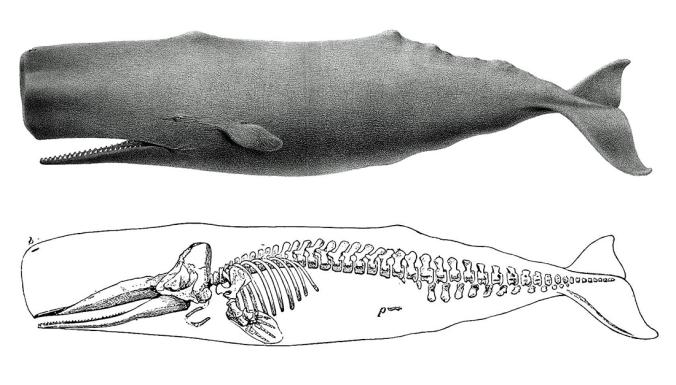
Buried deep within the body of a whale, underneath the heaps of muscles and tendons, lie some little, lonely bones. They are whale hips–and they are one of the stranger examples of evolution’s transforming power. Perhaps kinkier is a better word.

Buried deep within the body of a whale, underneath the heaps of muscles and tendons, lie some little, lonely bones. They are whale hips–and they are one of the stranger examples of evolution’s transforming power. Perhaps kinkier is a better word.

Many people think of coffee simply as an absolute necessity in the morning. But it’s also a fascinating piece of natural history. Here we have a plant that produces a potent chemical–caffeine–that can snap our brains to attention in low doses and kill us in big doses. Why on Earth would some Ethiopian bean go to such great lengths? For my Matter column this week in the New York Timesmy Matter column this week in the New York Times, I take a look at a new study that offers some answers.
Continue reading “Coffee: Millions of Years of Poison and Brain Manipulation”
The New York Times, September 4, 2014
Every second, people around the world drink more than 26,000 cups of coffee. And while some of them may care only about the taste, most use it as a way to deliver caffeine into their bloodstream. Caffeine is the most widely consumed psychoactive substance in the world.
Many of us get our caffeine fix in tea, and still others drink mate, brewed from the South American yerba mate plant. Cacao plants produce caffeine, too, meaning that you can get a mild dose from eating chocolate.
Caffeine may be a drug, but it’s not the product of some underworld chemistry lab; rather, it’s the result of millions of years of plant evolution. Despite our huge appetite for caffeine, however, scientists know little about how and why plants make it.
Continue reading “How Caffeine Evolved to Help Plants Survive and Help People Wake Up”
The New York Times, September 1, 2014
In the history of biology, two little animals loom large.
In the early 1900s, scientists began studying Drosophila melanogaster, the common fruit fly. Research on these fast-breeding insects revealed that genes lie on chromosomes, which turned out to be true for other animals, including us. For more than a century, scientists have continued to glean clues from the lowly fly to other mysteries of biology, like why we sleep and how heart disease develops.
In the 1960s, another unassuming animal joined biology’s pantheon: a tiny worm called Caenorhabditis elegans.
If you’re looking for something to read this weekend, here are a couple pieces I’ve written in the past few days:
1. Epigenetics are cool. Mind-controlling parasites are cool. Epigenetics + mind-controlling parasites = Very cool. That equation is the subject of my latest column for the New York Times.
2. Tomorrow marks the 100th anniversary of the extinction of the passenger pigeon. In honor of that event, I’ve written a piece for National Geographic News about why its demise still means so much to scientists a century later.
For more on the passenger pigeon, check out this previous post from the Loom, as well as this feature I wrote last year for National Geographic. A number of other writers are also marking tomorrow’s anniversary–for example, Elizabeth Kolbert at the New Yorker, David Biello at Scientific American, and John Fitzpatrick in the Sunday Review section of the New York Times.